|
|
|
Making
a Japanese garden is very different from making a Western
gardening. Process and forms must adhere to fundamental
traditions, philosophy, and elements, some of which are
shown in these watercolours.
|
|
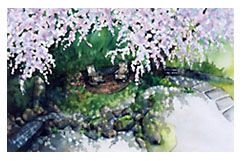
There must be a place of refuge, a quiet place where human
constructs are separate from, yet in harmony with, the rest
of the garden. A chair sits on a brick half-circle, beneath
the blossoming plum.
|
|
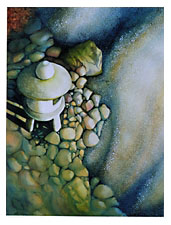
The little stone lantern embodies the
human spirit of the garden, a five-part 'head, shoulders,
torso, hips, and legs' that keeps watch with its light in
the night.
|
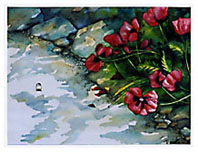
In the fledgling garden, when the rocks and earth were still
just bare bones, with some volunteer poppies, six chickadee
babies fledged in it. Five of them flitted quickly to protective
greenery, but one brave little soul stayed in the open, risking
all to drink in the sun's warmth |
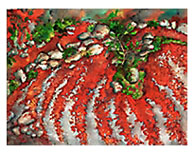
The fall leaves fell into the ribs of the dry pond, accentuating
the pattern carefully made to imitate the actions of nature,
showing how the human and natural work in harmony. |

Rocks
edge the dry pond and stream, feeding it as if they were formed
by a debris torrent. First morning light plays up the integration
of the contrived and natural. |
|
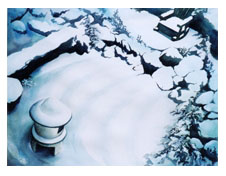
A Japanese garden must have a path that encompasses this world
within a world. The human-made objects must be in stark contrast
to the curves of nature, to play them up while fitting perfectly
with them. Signs of the forces of nature that formed it must
be subtle and clear.
|
|
|

![]()
